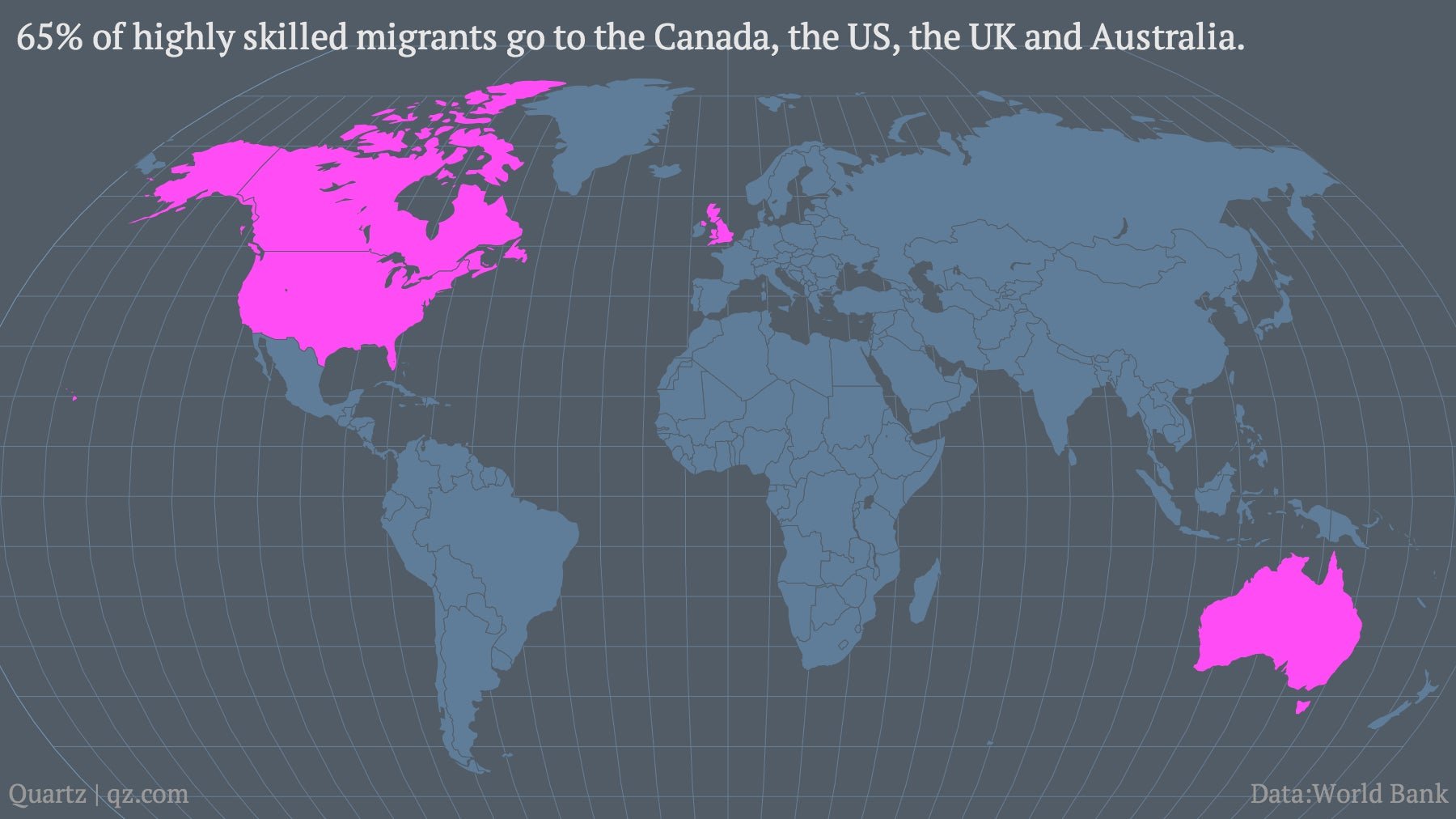English really is the language for the global highly-skilled worker—especially if she’s a woman
The World Bank is bullish on immigration in a way that many politicians aren’t right now: Where populist fears may animate the elected, the technocrats see immigration as low-hanging fruit to grow the world economy. In a new survey of migration data up until the year 2000, they find benefits for migrants, host countries and home countries in allowing more labor mobility.

The World Bank is bullish on immigration in a way that many politicians aren’t right now: Where populist fears may animate the elected, the technocrats see immigration as low-hanging fruit to grow the world economy. In a new survey of migration data up until the year 2000, they find benefits for migrants, host countries and home countries in allowing more labor mobility.
While the global population of migrants has held steady at about 3% of all people, the biggest trend since 1960 is the growth of migration from poor countries to wealthy countries. When it comes to college-educated migrants, a full 65% of them go to one of the English-speaking countries in pink above—the United Kingdom and its former colonies Canada, the United States and Australia. When data from 2000 to the present day come out (it takes a long time to process and compare data from 67 countries), it will be interesting to see if that decade’s relentless growth in places like China and India has altered the pattern at all.
One important factor for this so-called brain drain is the significant the contribution of women. Educated women are 15% more likely than educated men to leave developing economies and head for wealthier countries if they don’t have access to opportunities or wealth. It’s probably no surprise that the top sufferers of female brain drain (pdf, page 43) are countries with endemic conflicts or inequality for women, like Jamaica, Haiti and Afghanistan.
One counter-intuitive note in the study is that the departure of highly-educated people doesn’t always lead to a drain on skilled workers. In many countries, other migrants replace them, or natives see the departure of their fellows as an incentive to gain skills themselves. But there are some places where net inflows of low-skilled workers outnumbers those of college-educated ones. These including Gabon and Russia, but also wealthy countries like Belgium, France, New Zealand—and the United States, thanks to its large population of undocumented immigrants.